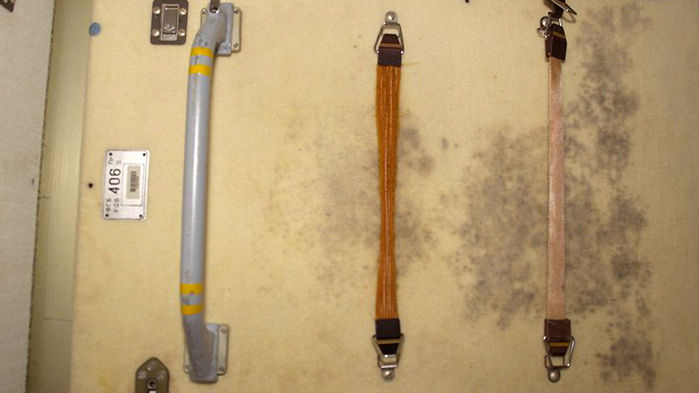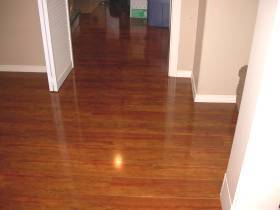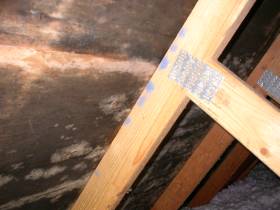Aspergillus Mold – Serious Hospital Contaminant

Infant dies after contracting Aspergillus mold infection at Seattle children’s hospital. Click link for details on pending case:
Moldy linens the culprit in infant deaths…
Click here for the full article: Moldy linens the culprit in infant deaths
The Ridge to Nowhere
THE RIDGE TO NOWHERE
This is a cautionary tale.
I spend a lot of my time in attics. I enjoy it actually. Donned in my Tyvek coveralls and full face respirator, I feel like a space explorer. It’s peaceful up there. And dark. But not too dark, most of the time.
This is the story about two different attics with one problem in common. There was extensive mold growing on the sheathing and trusses in both of these attics. In each case the homeowners turned to me to figure out why mold was growing when they have new roofs.
One was a new-construction home, and the other was an older home with a brand new roof. Both roofs have ridge vents. A ridge vent is installed at the peak of the roof; air comes in through soffit vents and the ridge vent is supposed to divert air out through the top of the ridge.
Now, I am not a roofing expert, but I could tell right away that something was terribly wrong in both of the cases in this story. It was dark. And I mean very dark in both of these attics. Usually, when I turn off my flashlight, after a few blinks I can see light filtering through the vents. It’s a way to tell that the pathways for ventilation are clear. In the new construction attic I could not see light coming from any of the soffit vents or from the ridge vent. No light filtered through from the ridge in the older home either, the soffit vents were barely twinkling. And there was no air movement at either ridge. Spiders like to hang out near working vents and I often see their webs gently moving as the air wafts through them. Not in these attics. Everything was still. Too still. The roof sheathing was moist too. The roofing nails were rusted. The mold colonies were very, very pleased.
Upon closer inspection I could just barely see light trying to eke through tiny cracks in what appeared to be tar paper that was obstructing the ridge vents. So no air could exit the top of the roof. In both cases insulation materials also blocked the soffit vents, so fresh air could not enter the attics. Additionally, both of the attic spaces had bathroom exhaust ducts that were routed to vents, adding to the moisture load already present from air stagnancy. Ventilation efficiency as shown in the diagram above? It’s now void. All that is left in both of my scenarios is stagnant air. Hence, the ridge to nowhere.
Roofing experts were called in for both of the cases. It was confirmed that both ridge vents were incorrectly installed. Liability for building defect fell upon the home builder in the new home; and liabilities for mold contamination, compromised air quality, and a new roof were charged against the Home Depot sub-contracted roofing contractor in the older home.
The cautionary ending to this story is that just because something is new, does not necessarily mean that it is functioning correctly. And the moral of the story? Have a third party inspection soon after a new roof or new insulation materials are installed, it might just save you a lot of headaches.
© Amy Siedlecki – The Mold Reporters Inc.
Dampness and Mould (Mold) Guidelines for Indoor Air Quality
Dampness and Mould (Mold) Guidelines for Indoor Air Quality
This is a comprehensive document published by The World Health Org. regarding dampness, mold and air quality issues in the indoor environment. Check it out!







